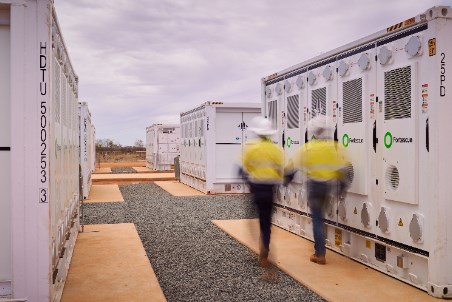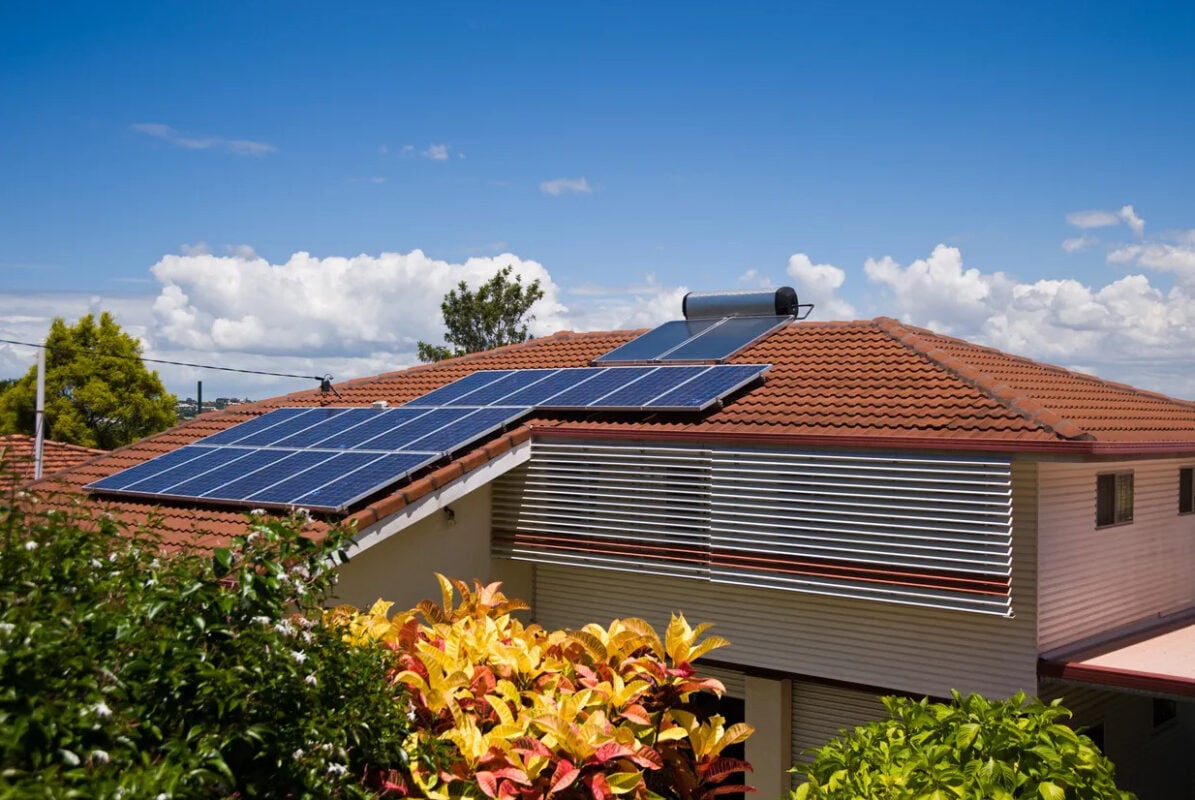Home Energy Management Systems: Transforming How We Use Power in Modern Homes – vocal.media

Report on the Global Home Energy Management Systems (HEMS) Market and its Alignment with Sustainable Development Goals
Introduction: HEMS as a Key Enabler for Global Sustainability
The global energy landscape is undergoing a critical transformation, driven by the dual imperatives of rising electricity costs and the urgent need for climate action as outlined in the Sustainable Development Goals (SDGs). Home Energy Management Systems (HEMS) have emerged as pivotal technologies in this transition, offering intelligent solutions to monitor, control, and optimize residential energy consumption. These systems are instrumental in advancing several SDGs, particularly SDG 7 (Affordable and Clean Energy), SDG 11 (Sustainable Cities and Communities), and SDG 13 (Climate Action).
The market reflects this growing importance. Valued at approximately USD 3.76 billion in 2024, the global HEMS market is projected to expand to USD 14.00 billion by 2033, demonstrating a compound annual growth rate (CAGR) of 15.70%. This growth is propelled by heightened consumer awareness, technological advancements, and government policies aimed at fostering sustainable energy practices.
The Role of HEMS in Achieving Sustainable Development Goals
Defining Home Energy Management Systems
A Home Energy Management System is an integrated platform that provides energy intelligence by connecting with smart meters, thermostats, lighting, appliances, and renewable energy sources like solar panels. By offering real-time insights into energy usage, HEMS empowers households to become active participants in creating a sustainable energy future.
Core Benefits and SDG Alignment
The multifaceted benefits of HEMS directly contribute to the achievement of specific Sustainable Development Goals:
- Energy Efficiency: By identifying and optimizing high-consumption devices, HEMS directly supports SDG 7 by improving energy efficiency and SDG 12 (Responsible Consumption and Production) by reducing resource waste.
- Cost Savings: Intelligent control over heating, cooling, and lighting systems reduces utility bills, making energy more affordable and accessible, a key target of SDG 7.
- Environmental Impact: By minimizing energy consumption and integrating renewable sources, HEMS significantly reduces household carbon footprints, contributing directly to SDG 13 (Climate Action).
- Remote Access and Control: The ability to manage home energy systems remotely via smart devices is a cornerstone of smart infrastructure, fostering the development of resilient and sustainable communities as envisioned in SDG 11.
Market Dynamics: Drivers and Barriers
Market Drivers
- Increasing Demand for Energy Efficiency: Growing environmental awareness and rising energy costs are compelling consumers to seek solutions that reduce consumption. HEMS provides the necessary tools for households to make informed decisions, aligning with the principles of SDG 7 and SDG 12. The integration of AI by companies like Schneider Electric further automates this optimization process.
- Advancements in Smart Home Technology: The proliferation of IoT devices enhances the capabilities of HEMS, enabling seamless automation. This technological progress supports SDG 9 (Industry, Innovation, and Infrastructure) by creating sophisticated energy management infrastructure. Partnerships like the Ford and Resideo “EV-Home Power Partnership” exemplify how HEMS can integrate new technologies to advance sustainable energy use.
- Government Incentives and Sustainability Goals: Global policies, including subsidies and tax credits, are accelerating HEMS adoption to meet national commitments under SDG 13. In the U.S., Energy Efficiency Resource Standards (EERS) in 25 states demonstrate a clear policy push towards the energy-saving targets of SDG 7.
Market Barriers
- High Initial Costs and Complexity: The upfront investment for HEMS hardware and installation can be a significant barrier, particularly in developing economies, challenging the “affordable” aspect of SDG 7. Simplifying installation and reducing costs are crucial for equitable access.
- Data Security and Privacy Concerns: As HEMS rely on collecting sensitive user data, ensuring robust cybersecurity is essential for building consumer trust. Addressing these concerns is vital for the successful implementation of the smart infrastructure required for SDG 11.
Analysis of Key Market Segments
Lighting Controls
Lighting control systems, a major HEMS component, utilize sensors and timers to eliminate unnecessary energy use. This directly contributes to SDG 12 by promoting responsible consumption patterns and reducing electricity waste.
Home Energy Management Software
Software platforms are the intelligence behind HEMS, analyzing data to provide actionable insights. This capability is fundamental to optimizing energy use and enhancing efficiency, thereby supporting the targets of SDG 7.
Cloud-Based Systems
Cloud-enabled HEMS offer scalability, remote accessibility, and advanced analytics. This technology facilitates widespread adoption and data-driven energy management, which is essential for building the smart, sustainable cities targeted by SDG 11.
Regional Market Overview and SDG Implementation
United States
The U.S. market is driven by strong government incentives and high smart home adoption rates, reflecting a commitment to achieving the goals of SDG 7 and SDG 13. The launch of platforms like ABB’s ReliaHome Smart Panel underscores the focus on sustainable residential solutions.
United Kingdom
The U.K.’s legally binding goal of net-zero emissions by 2050 provides a powerful incentive for HEMS adoption. This national strategy is a direct implementation of SDG 13, with HEMS serving as a key technology for residential decarbonization.
India
In India, market growth is linked to government smart city initiatives and urbanization, aligning with SDG 11. The introduction of systems like ABB-free@home addresses the need for energy-saving solutions in a rapidly growing urban landscape.
Saudi Arabia
Saudi Arabia’s Vision 2030 initiative, which prioritizes energy efficiency and sustainability, is fueling HEMS adoption. This aligns with the country’s efforts to diversify its energy mix and promote clean energy in line with SDG 7.
HEMS Market Segmentation
By Product Type
- Lighting Controls
- Thermostats
- Self-Monitoring Systems
- Advanced Central Controllers
- Intelligent HVAC Controllers
By Component
- Hardware
- Software
- Services
By Deployment Type
- On-Premise
- Cloud
Key Industry Players
- Honeywell International, Inc.
- General Electric Company
- Comcast Cable (Xfinity)
- Panasonic Corporation
- Johnson Controls
- Schneider Electric SE
- Robert Bosch GmbH
Conclusion: HEMS as a Catalyst for a Sustainable Future
The Home Energy Management System market is poised for substantial growth, driven by the global imperative for sustainable energy solutions. HEMS are more than a convenience; they are a critical tool for achieving multiple Sustainable Development Goals. By empowering homeowners to monitor usage, integrate renewables, and reduce their carbon footprint, these systems directly advance SDG 7 (Affordable and Clean Energy), SDG 11 (Sustainable Cities and Communities), SDG 12 (Responsible Consumption and Production), and SDG 13 (Climate Action). While challenges related to cost and data privacy remain, ongoing technological innovation and supportive government policies are paving the way for widespread adoption. As the market expands toward its projected USD 14 billion valuation by 2033, HEMS will fundamentally reshape residential energy consumption, creating a smarter, more efficient, and sustainable future for all.
Analysis of Sustainable Development Goals in the Article
1. Which SDGs are addressed or connected to the issues highlighted in the article?
The article on Home Energy Management Systems (HEMS) addresses and connects to several Sustainable Development Goals (SDGs) by focusing on technology-driven solutions for energy efficiency, sustainability, and climate action.
-
SDG 7: Affordable and Clean Energy
- The entire article revolves around managing energy consumption more efficiently and integrating renewable energy sources. It discusses how HEMS helps reduce electricity costs and supports the use of clean energy like solar panels, directly aligning with the goal of ensuring access to affordable, reliable, sustainable, and modern energy.
-
SDG 9: Industry, Innovation, and Infrastructure
- The article highlights technological advancements such as IoT, AI, and cloud-based systems as key drivers for HEMS. It discusses innovations from companies like Schneider Electric and ABB, which are upgrading residential infrastructure to be smarter and more sustainable. This focus on advanced, sustainable technology directly relates to building resilient infrastructure and fostering innovation.
-
SDG 11: Sustainable Cities and Communities
- HEMS contributes to making homes, the fundamental units of cities, more sustainable and energy-efficient. The article mentions that HEMS helps reduce the environmental impact of households. Furthermore, it explicitly links the growth of the HEMS market in India to “government smart city initiatives,” connecting the technology to the broader goal of creating sustainable urban environments.
-
SDG 12: Responsible Consumption and Production
- The core function of HEMS is to promote responsible energy consumption. The article states that these systems “monitor, control, and optimize energy consumption” and empower homeowners to “make informed energy choices.” This directly supports the goal of ensuring sustainable consumption patterns by improving resource efficiency.
-
SDG 13: Climate Action
- A primary motivation for adopting HEMS, as stated in the article, is to address “climate change pressures.” The text repeatedly mentions that a key benefit of HEMS is its ability to minimize “carbon footprints” and that government policies promoting these systems aim to “reduce greenhouse gas emissions.” This aligns directly with taking urgent action to combat climate change and its impacts.
2. What specific targets under those SDGs can be identified based on the article’s content?
Based on the article’s discussion of HEMS, several specific SDG targets can be identified:
-
Target 7.2: Increase substantially the share of renewable energy in the global energy mix.
- The article mentions that HEMS connects with “renewable energy sources such as solar panels” and that companies are focused on “renewable energy optimization.” This shows how the technology facilitates the integration and efficient use of renewable energy at the residential level.
-
Target 7.3: Double the global rate of improvement in energy efficiency.
- This is the most central target addressed. The article’s main theme is improving energy efficiency in homes. It states that “increasing awareness of energy efficiency” is a primary market driver and that a key benefit of HEMS is its ability to pinpoint “high-energy-consuming devices and optimizes their operation.”
-
Target 9.4: Upgrade infrastructure and retrofit industries to make them sustainable, with increased resource-use efficiency and greater adoption of clean and environmentally sound technologies.
- HEMS represents a “clean and environmentally sound technology” being adopted to upgrade residential infrastructure. The article’s focus on “advancements in smart home technology” and the development of new products like the “ReliaHome Smart Panel” by ABB illustrates this target in action.
-
Target 11.6: Reduce the adverse per capita environmental impact of cities.
- By enabling households to reduce energy consumption and “minimize carbon footprints,” HEMS directly contributes to lowering the overall environmental impact of urban and residential areas. The article’s mention of HEMS adoption being fueled by Saudi Arabia’s “Vision 2030 initiative, aiming for energy efficiency and sustainability” supports this connection.
-
Target 13.2: Integrate climate change measures into national policies, strategies and planning.
- The article provides concrete examples of this target. It mentions that “25 U.S. states have implemented mandatory Energy Efficiency Resource Standards (EERS)” and that the UK market is driven by the “country’s goal of achieving net-zero carbon emissions by 2050.” These are direct instances of governments integrating climate action into their policies, which in turn drives HEMS adoption.
3. Are there any indicators mentioned or implied in the article that can be used to measure progress towards the identified targets?
Yes, the article mentions and implies several quantitative and qualitative indicators that can measure progress towards the identified targets.
-
Indicator for Target 7.3 & 9.4: Market growth and adoption rate of energy-efficient technologies.
- The article provides specific financial data: “the global HEMS market was valued at approximately USD 3.76 billion, and it is projected to skyrocket to USD 14.00 billion by 2033, growing at a compound annual growth rate (CAGR) of 15.70%.” This market growth serves as a direct indicator of the adoption of energy efficiency technology.
-
Indicator for Target 13.2: Number and scope of national policies and incentives for sustainability.
- The article explicitly states that “25 U.S. states have implemented mandatory Energy Efficiency Resource Standards (EERS), with five additional states plus Washington D.C. setting energy efficiency targets.” It also mentions the UK’s “net-zero carbon emissions by 2050” goal. These serve as concrete indicators of policy integration.
-
Indicator for Target 7.3 & 12.2: Reduction in household energy consumption.
- While not providing specific numbers, the article implies this indicator by stating that a key benefit of HEMS is that it “Reduces utility bills by controlling heating, cooling, and lighting systems intelligently.” The data collected by HEMS software itself could serve as a direct measure of this reduction.
-
Indicator for Target 11.6 & 13: Reduction in carbon footprint.
- This is an implied indicator. The article repeatedly highlights that HEMS “Minimizes carbon footprints by promoting sustainable energy consumption” and helps “reduce greenhouse gas emissions.” Progress can be measured by aggregating the carbon savings from HEMS-equipped homes.
-
Indicator for Target 7.2: Rate of integration of renewable energy sources in residential buildings.
- The article implies this indicator by discussing HEMS’s ability to integrate with “renewable energy sources such as solar panels” and the partnership between Ford and Resideo for a “vehicle-to-home (V2H) system” using EV batteries. The adoption rate of such integrated systems would be a key performance indicator.
4. Table of SDGs, Targets, and Indicators
| SDGs | Targets | Indicators |
|---|---|---|
| SDG 7: Affordable and Clean Energy |
7.2: Increase the share of renewable energy. 7.3: Double the rate of improvement in energy efficiency. |
|
| SDG 9: Industry, Innovation, and Infrastructure | 9.4: Upgrade infrastructure with clean and environmentally sound technologies. |
|
| SDG 11: Sustainable Cities and Communities | 11.6: Reduce the adverse per capita environmental impact of cities. |
|
| SDG 12: Responsible Consumption and Production | 12.2: Achieve the sustainable management and efficient use of natural resources. |
|
| SDG 13: Climate Action | 13.2: Integrate climate change measures into national policies, strategies and planning. |
|
Source: vocal.media

What is Your Reaction?
 Like
0
Like
0
 Dislike
0
Dislike
0
 Love
0
Love
0
 Funny
0
Funny
0
 Angry
0
Angry
0
 Sad
0
Sad
0
 Wow
0
Wow
0



















































.jpg.webp?itok=0ZsAnae9#)

























